Featured
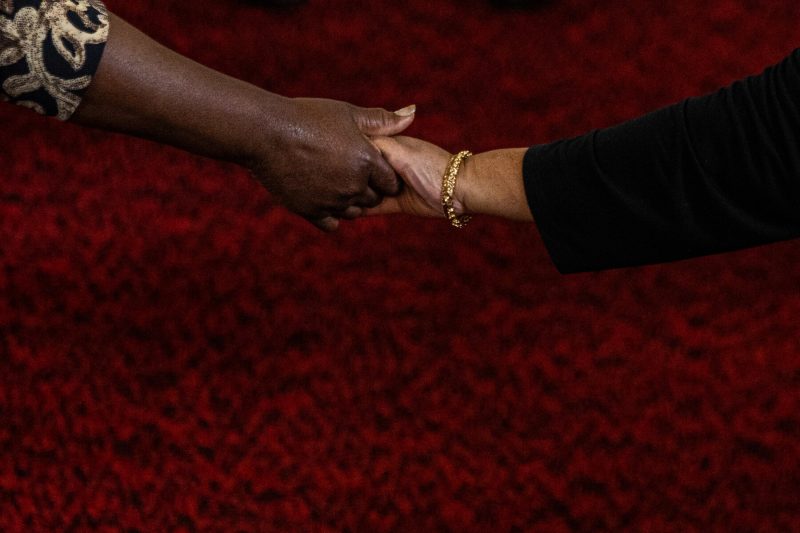 The Arrow in America’s Heart. By Elizabeth Dias / NYT
The Arrow in America’s Heart. By Elizabeth Dias / NYT
Relentless mass shootings, a million dead from Covid — How much do we value a single life?
Two days after the massacre of children in Uvalde, Texas, and 12 days after the racist mass killing in Buffalo, Chenxing Han, a chaplain and teacher, told a Buddhist parable. A man is shot with a poisoned arrow, Ms. Han recounted as she drove a group of high school seniors to visit a Thai temple in Massachusetts. The arrow piercing his flesh, the man demands answers. What kind of arrow is it? Who shot the arrow? What kind of poison is it? What feathers are on the arrow, a peacock’s or a hawk’s? But all these questions miss the point, the Buddha tells his disciple. What is important is pulling out that poison arrow, and tending to the wound. Read more
Related: The gun debate is paralyzed by our past. By E.J. Dionne Jr. / Wash Post
Political / Social
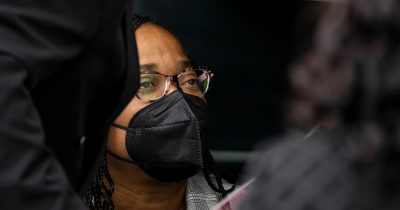 Black Buffalo determined to rebuild while dealing with grief and sorrow. By Curtis Bunn / NBC News
Black Buffalo determined to rebuild while dealing with grief and sorrow. By Curtis Bunn / NBC News
Local leaders call on Mayor Byron Brown to commit to fixing concerns that have been amplified by the killing of 10 Black people at a Tops supermarket.
The national media has packed up and moved on to the next mass shooting in America. But residents on the eastside of Buffalo, where 85 percent of the population is Black, are still grieving — while also trying to figure out how to rebuild. “This isn’t one of those situations where we can just go on with our daily lives,” said Jillian Hanesworth, Buffalo’s first poet laureate and a social justice activist working for the organization Open Buffalo. The May 14 massacre magnified the plight of a community that had long been disadvantaged before 10 Black people were gunned down by a white supremacist at a supermarket. Read more
Related: Buffalo Shooting Highlights Big Tech’s Race Problem. By Nolan Higdon / The Progressive
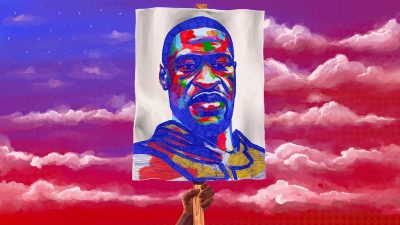 Two Years After George Floyd, Black Leaders Reflect On Change. By Jared Council / Forbes
Two Years After George Floyd, Black Leaders Reflect On Change. By Jared Council / Forbes
To understand the complexities of where we stand as a nation, though, look no further than the racially motivated mass murder at a Buffalo grocery store on May 14. In an effort to capture the reality of being Black in America, we decided that we wanted to hear from leaders in the community. Here are some of their reflections on the post-Floyd era. Read more
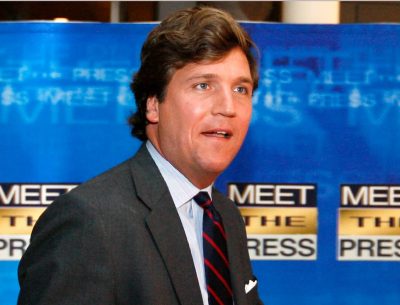 Great Replacement theory: Poll finds 7 in 10 Republicans believe it. By Will Carless / USA Today
Great Replacement theory: Poll finds 7 in 10 Republicans believe it. By Will Carless / USA Today
A month before a white gunman killed 10 people and injured three, most of them Black, in Buffalo, New York, a poll found that 7 out of 10 Republicans said they believe in the “great replacement.” That conspiracy theory, which was heavily cited in online postings purportedly left by the Buffalo shooter, claims that political forces are intentionally changing the demographics of the country to affect elections. The poll in April of 1,500 Americans by the Southern Poverty Law Center and Tulchin Research found that 45% of young Republican men, and 42% of young male Democrats, said they approve of violence to achieve political change. Read more
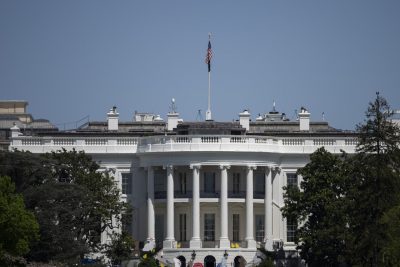 Biden sees exodus of Black staffers and some frustration among those who remain. By Daniel Lippman / Politico
Biden sees exodus of Black staffers and some frustration among those who remain. By Daniel Lippman / Politico
The White House is historically diverse. But there are concerns internally about a wave of departures and the current culture.
At least 21 Black staffers have left the White House since late last year or are planning to leave soon. Some of those who remain say it’s no wonder why: They describe a work environment with little support from their superiors and fewer chances for promotion. The departures have been so pronounced that, according to one current and one former White House official, some Black aides have adopted a term for them: “Blaxit.” Read more
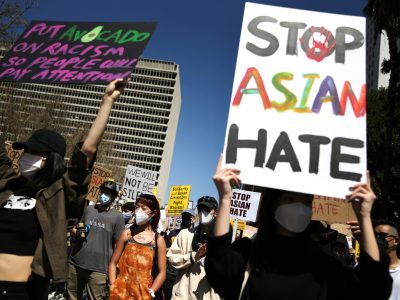 A rise in anti-AAPI crimes led these 3 Asian Americans to fight back. By Sarah Beth Guevara et al / ABC News
A rise in anti-AAPI crimes led these 3 Asian Americans to fight back. By Sarah Beth Guevara et al / ABC News
Mina Fedor is an American 14-year-old. For her family, disturbing acts of anti-Asian American and Pacific Islander hate have always been a possibility, but it’s felt more intense since the pandemic. In 2020, Mina watched a woman cough at her mother. This act spurred the then-12-year-old to advocacy. “The lady who did that didn’t see a mom. She didn’t see a community member. She didn’t see an American. She just saw an Asian lady,” said Mina. Read more
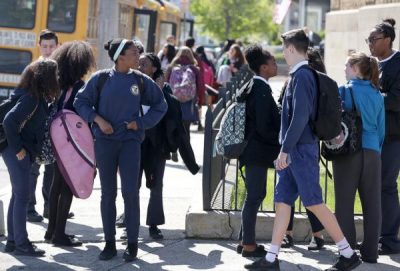 Desegregating schools requires more than giving parents free choices – a scholar studies the choices parents of all races make. Chantal Hailey / The Conversation
Desegregating schools requires more than giving parents free choices – a scholar studies the choices parents of all races make. Chantal Hailey / The Conversation
My research at this moment focuses on school choice in New York City, and particularly the role of race in how people choose high schools in New York City. This is important for a couple of reasons. One, New York City is the largest school district in the United States. Over a million kids attend school in this school district. Read more
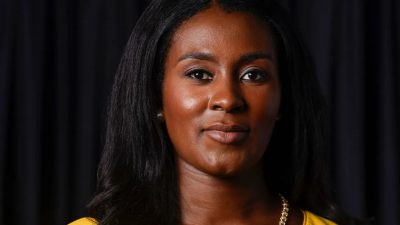 Black women in business: Why there are still so few at the top. Jayme Fraser and Jessica Guynn / USA Today
Black women in business: Why there are still so few at the top. Jayme Fraser and Jessica Guynn / USA Today
Charlotte Newman, a Black Senior manager at Amazon, sues company executives in a discrimination and sexual harassment case.
Deep racial inequities in the U.S. workforce disproportionately harm Black women and other women of color. Nowhere are those gaps more stark than in who gets the jobs with the most pay, perks and power, a new USA TODAY analysis of hundreds of top companies has found. White women are 4.5 times more likely than Black women to hold a leadership position, according to the analysis, which drew on the latest reports of employee demographics at 287 of the nation’s 500 biggest companies provided by data firm DiversIQ. White men, who dominate the corporate executive ranks, are almost 8 times as likely as Black women to be an executive. Read more
Ethics / Morality / Religion
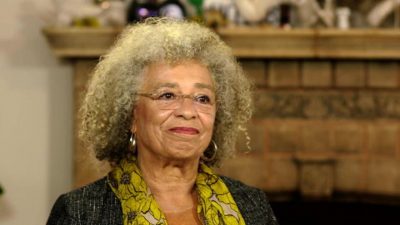 Angela Davis on social change: “No movement is possible without hope.” By CBS News
Angela Davis on social change: “No movement is possible without hope.” By CBS News
“There are so many issues that you’ve fought against that seem current; you were fighting against them 50 years ago,” Luciano said. “How do you not lose hope?” “No change is possible without hope,” she replied. “No movement is possible without hope.” A hope reflected in her November 1972 speech at California State University Fullerton: “We have to march on with the unshakeable confidence that we will win our fight for a new society, our fight for a society where freedom, justice, equality, abundance, dignity and happiness belongs to all.” Read more
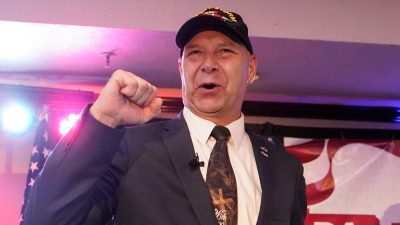 Christian Nationalism On The Rise In Some GOP Campaigns. By Peter Smith and Deepa Bharath / HuffPost
Christian Nationalism On The Rise In Some GOP Campaigns. By Peter Smith and Deepa Bharath / HuffPost
The victory party took on the feel of an evangelical worship service after Doug Mastriano won Pennsylvania’s Republican gubernatorial primary this month. As a Christian singer led the crowd in song, some raised their arms toward the heavens in praise. Mastriano opened his remarks by evoking Scripture: “God uses the foolish to confound the wise.” He claimed Pennsylvanians’ freedom would be “snatched away” if his Democratic opponent wins in November, and cast the election in starkly religious terms with another biblical reference: “Let’s choose this day to serve the Lord.” Read more
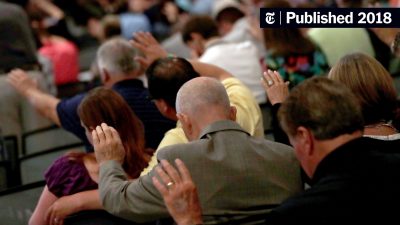 The Racist Roots of the Southern Baptist Convention’s Sex Scandal “Apocalypse.” By Audrey Clare Farley / TNR
The Racist Roots of the Southern Baptist Convention’s Sex Scandal “Apocalypse.” By Audrey Clare Farley / TNR
America’s preeminent Protestant denomination is tearing itself apart over its leaders’ long-running cover-up of abusers in its ranks. But there’s a deeper reckoning that’s being avoided.
Unless and until more white evangelicals and their same-colored critics come to grips with how institutional racism gives rise to sexual abuse scandals like the present one, no one can credibly claim that some new era is upon us; both whites and people of color will continue to be victimized within and beyond white evangelical spaces. Read more
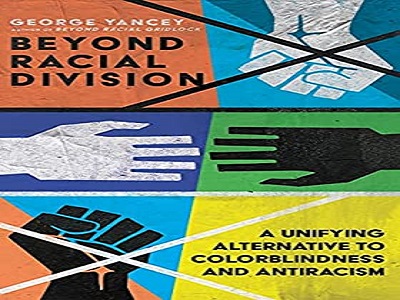 Don’t Ignore Race. Or Alienate White People. By Monique Duson / Christianity Today
Don’t Ignore Race. Or Alienate White People. By Monique Duson / Christianity Today
Sociologist George Yancey outlines an alternative to colorblindness and antiracism.
In Beyond Racial Division: A Unifying Alternative to Colorblindness and Antiracism, Baylor University sociologist George Yancey seeks a new way forward, one grounded in a vision of healthy interracial communication and community. As Yancey argues, both colorblindness and antiracism result in “racial alienation,” which prevents us from working out our racial issues together in a way that honors the dignity, value, and worth of every individual. Read more
Historical / Cultural
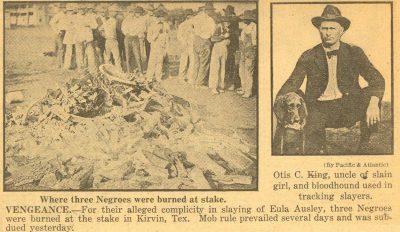 One family’s photo album includes images of a vacation, a wedding anniversary and the lynching of a Black man in Texas. By Jeffrey L. Littlejohn / The Conversation
One family’s photo album includes images of a vacation, a wedding anniversary and the lynching of a Black man in Texas. By Jeffrey L. Littlejohn / The Conversation
As a historian and director of the Lynching in Texas project, which has documented more than 600 racial terror lynchings, I receive regular emails from journalists, scholars and activists who want to discuss the history of racial violence. My conversations with reporters and historians did not prepare me for one of the emails I received last winter. The writer, a Chicago memorabilia dealer, offered to mail me a photo album that included a picture from a Texas lynching. Read more
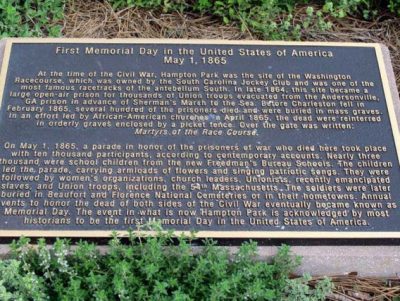 Freed slaves started first Memorial Day in the U.S. – New York Amsterdam News
Freed slaves started first Memorial Day in the U.S. – New York Amsterdam News
Memorial day is a day that is set aside to honor those who fought in for the United States Military. As many headed out to the beach or maybe a family barbeque enjoying the weather many might not be aware of the several different theories of how memorial day began. On May 1 , 1865 , freed slaves came together in Charleston , S.C to pay tribute to the Union soldiers that had been deceased and put into a common burial after the war. There were 257 deceased Union soldiers , according to the American Oracle : The Civil War In the Civil Rights Era, a book written by David Blight a Yale University professor . Read more
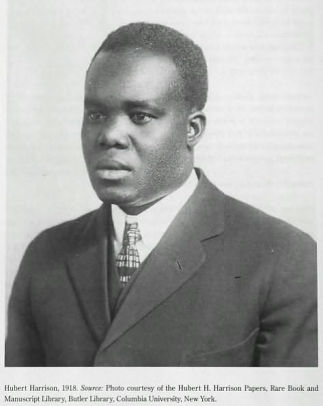 Hubert Harrison, Giant of Harlem Radicalism. By Robert Greene II / The Nation
Hubert Harrison, Giant of Harlem Radicalism. By Robert Greene II / The Nation
Hubert Harrison represents one of the clearest examples of the difficulties of being a Black intellectual and activist in the 20th century. Upon his death in 1927, Harrison was recognized in many magazines and journals for the prominent role he’d played in this country’s socialist and Black radical politics. As someone who’d organized a number of advocacy groups, as well as edited Negro World for Marcus Garvey’s Universal Negro. Read more
 The injustices endured by Native American youths continue to this day. By Katrina vanden Heuvel / WashPost
The injustices endured by Native American youths continue to this day. By Katrina vanden Heuvel / WashPost
When Joe Wheeler was sent to a boarding school for Native American youths in Oklahoma, he would later tell his grandson, his teachers taught him his first lesson by cutting his hair. Then, when he spoke Wichita instead of English, they made him eat soap. And when he kept speaking Wichita, they beat him — or as they’d say, “civilized” him. The torment Wheeler endured decades ago is typical of what thousands of children experienced from 1819 to 1969 at the more than 400 Native American boarding schools recently identified in an unprecedented report by the Interior Department released May 11. Read more
 Joan Trumpauer Mulholland recalls 1963 sit-in protest. By Tori B. Powell / CBS News
Joan Trumpauer Mulholland recalls 1963 sit-in protest. By Tori B. Powell / CBS News
Despite the hardships she faced stemming from her commitment to social justice work throughout the height of the civil rights movement, activist Joan Trumpauer Mulholland, 80, says she wasn’t afraid. Fifty-nine years ago, Mulholland, who is white, was one of those photographed staging a sit-in to protest segregation in the south, an act in which she said was inspired by a higher power. “I was just doing what the spirit said to do,” Mulholland told CBS News’ Elise Preston. “I knew when I had a chance to do something to make things fair, I would do it and that came with the sit-ins.” Read more
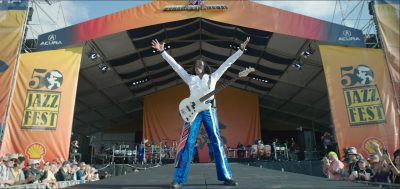 ‘Jazz Fest’ documentary isn’t just about jazz, or music, but life. By Michael O’Sullivan / Wash Post
‘Jazz Fest’ documentary isn’t just about jazz, or music, but life. By Michael O’Sullivan / Wash Post
Jazz Fest — or, as the annual Big Easy music gathering now in its 51st year is more formally known, the New Orleans Jazz and Heritage Festival — isn’t now and never was just about jazz. As the lively and illuminating documentary “Jazz Fest: A New Orleans Story” makes clear, it’s a celebration of funk, gospel, blues, rock, Cajun, zydeco, soul, hip-hop and many, many genres in between, including something called rap cabaret. At area theaters. Contains brief strong language and some suggestive images. Read more
Sports
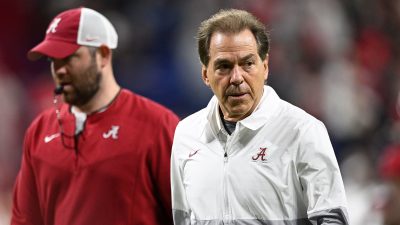 Nick Saban’s comments illustrate the NCAA’s continual exploitation of Black athletes. By Martenzie Johnson / Andscape
Nick Saban’s comments illustrate the NCAA’s continual exploitation of Black athletes. By Martenzie Johnson / Andscape
The Alabama-Texas A&M war of words is the latest example that colleges are terrified they can’t fully control their Black labor force
After you zero in on the language Saban used when tarnishing the Aggies (“bought every player”), the fact that he roped historically Black Jackson State into his remarks, and the racial connotation of discussing the purchase of Black people in a room full of white people in, of all places, Birmingham, Saban’s comments illustrate the NCAA’s continued exploitation of Black athletes — no matter the amount of compensation now afforded to them. Read more
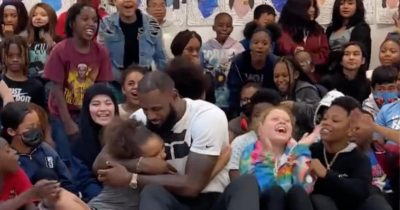 LeBron James surprises Ohio kids on their last day of school. By Caitlin O’Kane / CBS News
LeBron James surprises Ohio kids on their last day of school. By Caitlin O’Kane / CBS News
Students at the I Promise school in Akron, Ohio gathered on the last day of school — and got a huge surprise. LeBron James walked in the room and the kids went wild. The Los Angeles Laker created the elementary school in his hometown of Akron, Ohio through his LeBron James Family Foundation. The school posted several videos and photos of the shocked kids on social media. “We ALL needed this after this year. Thank you [LeBron James] for the hugs, high-fives, love, and words of wisdom. Proud to be a part of this family and striving to change the world,” I Promise School tweeted. Read more
 Colin Kaepernick completes workout with Las Vegas Raiders, source says. By Adam Schefter / ESPN
Colin Kaepernick completes workout with Las Vegas Raiders, source says. By Adam Schefter / ESPN
Colin Kaepernick, who last played professional football in 2016 — the year he started kneeling during the national anthem to protest racial injustice — worked out Wednesday for the Las Vegas Raiders, a league source told ESPN. It marked Kaepernick’s first workout with an NFL team since being exiled, and it was the first time the former star quarterback visited with a team since he flew to Seattle to meet with the Seahawks in May 2017, before they passed on the opportunity to sign him. Read more
Site Information
Articles appearing in the Digest are archived on our home page. And at the top of this page register your email to receive notification of new editions of Race Inquiry Digest.
Click here for earlier Digests. The site is searchable by name or topic. See “search” at the top of this page.
About Race Inquiry and Race Inquiry Digest. The Digest is published on Mondays and Thursdays.
Use the customized buttons below to share the Digest in an email, or post to your Facebook, Linkedin or Twitter accounts.